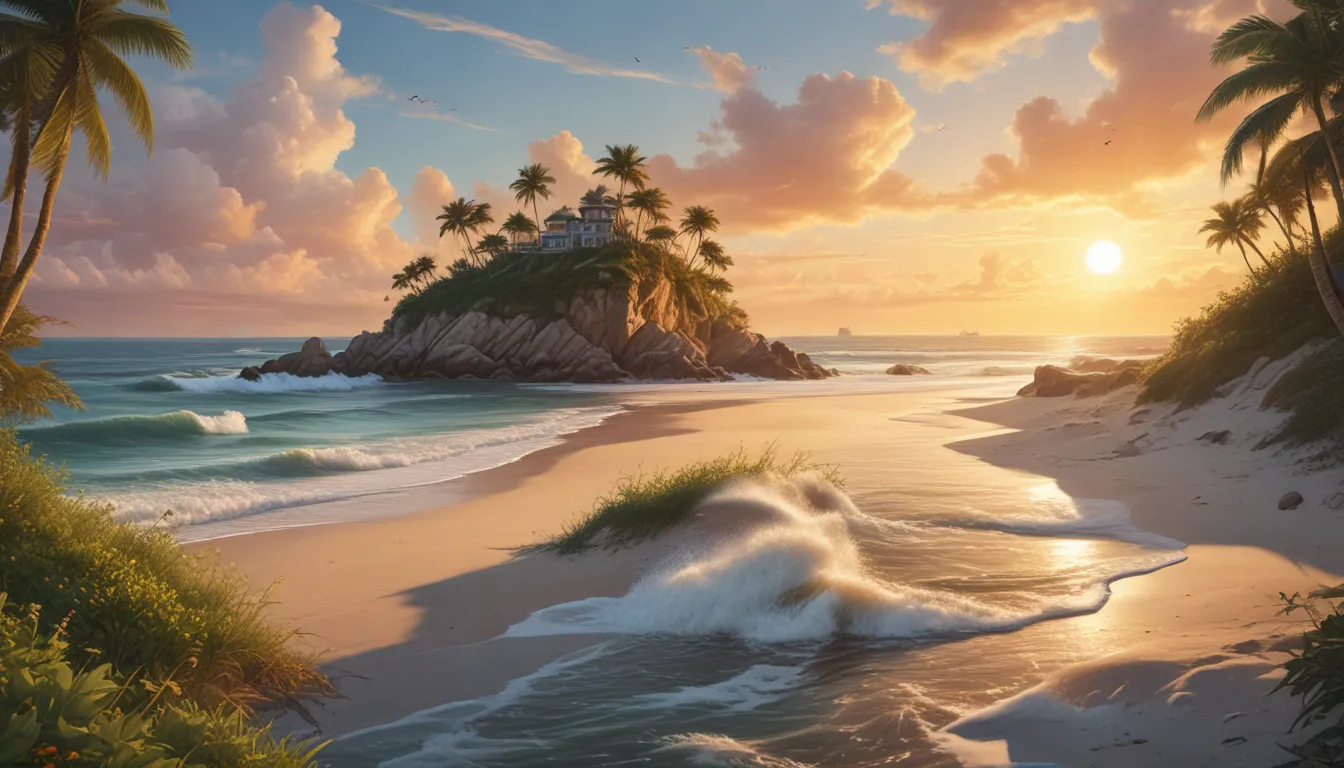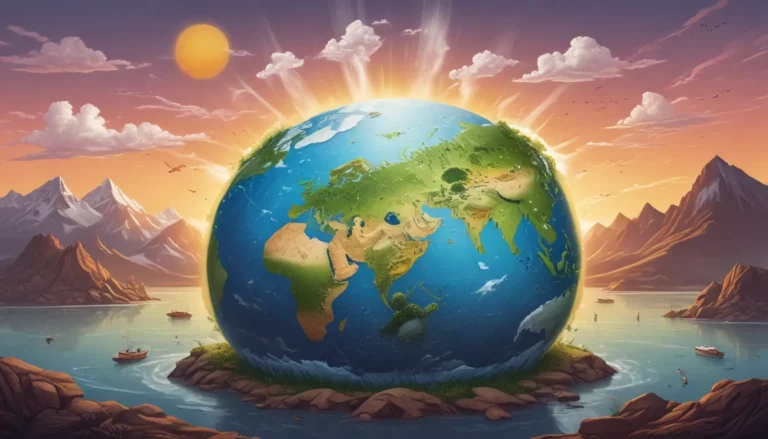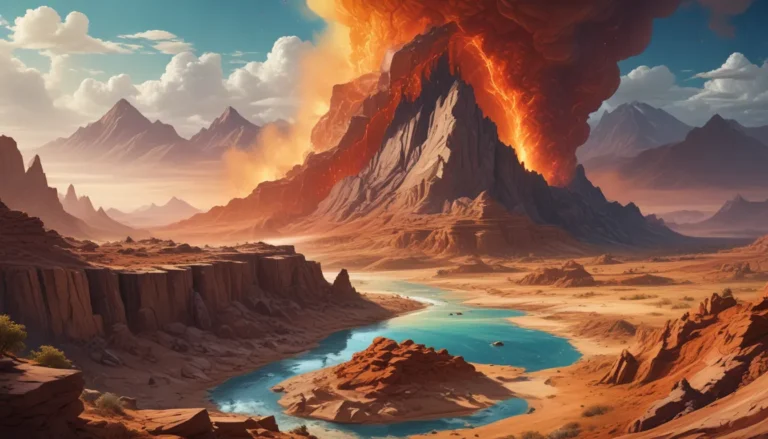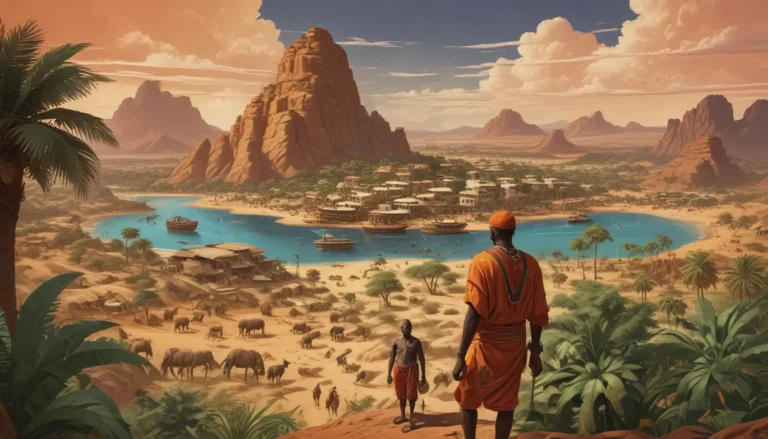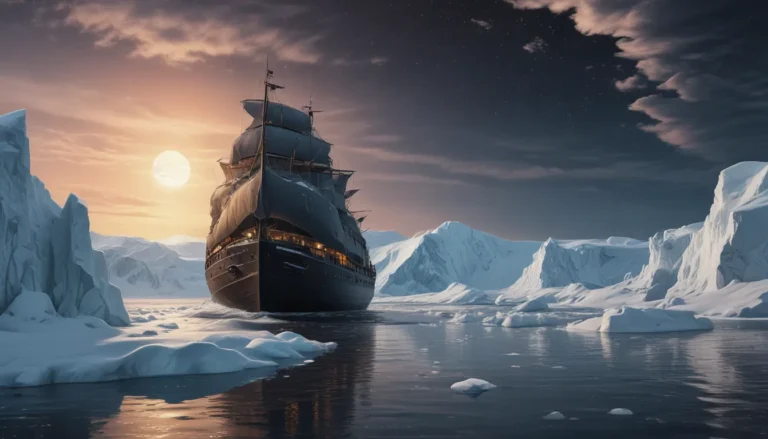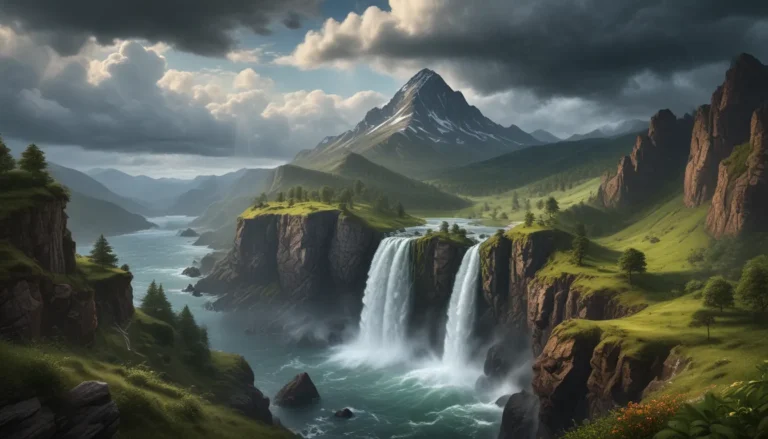A Note About Images: The images used in our articles are for illustration purposes only and may not exactly match the content. They are meant to engage readers, but the text should be relied upon for accurate information.
Are you ready to embark on a fascinating journey through the mesmerizing world of barrier islands? These slender strips of land, parallel to the mainland, offer more than just protection against the forces of the ocean. They are rich in biodiversity, constantly changing, and play a crucial role in coastal ecosystems. In this article, we will explore eight mind-blowing facts about barrier islands, from their formation to their significance in mitigating climate change. Join us as we dive into the captivating world of these unique geographical features.
Unveiling the Secrets of Barrier Islands
- Barrier islands are natural defenses against storms, providing protection to coastal communities.
- They support diverse ecosystems and offer recreational opportunities, making them important and fascinating geographical features.
- Climate change poses a significant threat to barrier islands, leading to the risk of erosion and potential disappearance. Understanding and protecting these unique landforms is crucial for the future.
Understanding the Formation of Barrier Islands
Barrier islands are narrow strips of land formed by the natural processes of waves, tides, and currents. Made up of sand, sediment, and shell debris, these islands are a result of continuous interactions between the ocean and the coastline. Their parallel orientation to the mainland allows them to serve as a protective barrier against storm surges and erosion.
The Protective Role of Barrier Islands
Acting as a natural defense against storms, barrier islands play a vital role in safeguarding the mainland from the destructive forces of hurricanes and high waves. The dunes and vegetation on these islands help absorb the impact of storms, reducing potential damage to coastal communities. By acting as buffers, barrier islands protect coastal areas and provide valuable habitats for a diverse range of plants and animals.
The Rich Biodiversity of Barrier Islands
Despite their narrow size, barrier islands are home to a variety of ecosystems, including salt marshes, dunes, lagoons, and tidal flats. These habitats provide crucial breeding grounds for numerous species of birds, fish, and marine mammals. The unique environment of barrier islands supports a rich biodiversity that is essential for the overall health of coastal ecosystems.
The Dynamic Nature of Barrier Islands
Constantly changing and shifting in shape, barrier islands are shaped by the forces of erosion and deposition. Sand transport along the coast and sediment accumulation result in a phenomenon known as island migration. This dynamic process is essential for the resilience and adaptability of barrier islands in the face of changing environmental conditions.
Leisure and Recreation on Barrier Islands
Popular tourist destinations, barrier islands offer a host of recreational opportunities for visitors. From swimming and surfing to fishing and birdwatching, these islands provide a picturesque setting for outdoor activities. The pristine beaches, clear waters, and abundant wildlife make barrier islands an ideal destination for nature enthusiasts and adventure seekers alike.
Famous Barrier Islands Around the World
Barrier islands can be found in various parts of the world, each with its own unique characteristics. Examples include the Outer Banks in North Carolina, the Florida Keys, the barrier islands along the Gulf Coast of Texas, and Fraser Island in Australia. These iconic locations showcase the diverse beauty and importance of barrier islands on a global scale.
The Crucial Role of Barrier Islands in Coastal Ecosystems
By providing valuable habitats for numerous plants and animals, barrier islands play a crucial role in supporting coastal ecosystems. Endangered and threatened species find refuge on these islands, while they help filter pollutants, reduce erosion, and maintain a balance between land and sea. Preserving barrier islands is essential for protecting the delicate coastal ecosystem and ensuring the sustainability of marine life.
Climate Change Threats to Barrier Islands
The impacts of climate change, including rising sea levels and increased storm intensity, pose a significant threat to barrier islands. These vulnerable landforms are at risk of erosion and potential disappearance as a result of changing environmental conditions. Understanding the challenges posed by climate change is essential for developing strategies to protect and preserve barrier islands for future generations.
Conclusion: Embracing the Wonder of Barrier Islands
In conclusion, barrier islands are captivating geographical features that offer a glimpse into the intricate processes of nature. From their protective role against storms to their diverse ecosystems and recreational opportunities, these islands hold a wealth of experiences for nature enthusiasts and scientists alike. By appreciating the beauty and significance of barrier islands, we can develop a deeper understanding of the vital role they play in coastal ecosystems. So, next time you encounter a barrier island, take a moment to marvel at its wonders and celebrate the marvels of nature that surround us.
FAQs About Barrier Islands
-
What is a barrier island?
A barrier island is a long, narrow landform that runs parallel to the mainland and protects it from the open sea. -
How are barrier islands formed?
Barrier islands are formed through a combination of ocean currents, sediment deposition, and sea level changes. Over time, sand and other sediments accumulate, creating the elongated, low-lying islands. -
How do barrier islands change over time?
Barrier islands are constantly evolving due to natural processes such as erosion and accretion. These changes can be caused by storms, sea level rise, and changes in sediment supply. -
What makes barrier islands unique?
Barrier islands are unique because of their dynamic nature. They act as a buffer between the ocean and the mainland, and their shifting sands create diverse habitats for a variety of plant and animal species. -
Are barrier islands vulnerable to storms?
Yes, barrier islands are vulnerable to storms due to their exposed location. However, their natural sand dunes and vegetation help absorb the impact of the waves and provide some protection to the mainland. -
Can barrier islands be visited?
Yes, many barrier islands are accessible to visitors and offer opportunities for recreation such as swimming, fishing, and birdwatching. However, it is important to respect the delicate ecosystems and follow any regulations or guidelines in place to preserve these natural wonders.
Experience the Enchantment of Barrier Islands
Barrier islands offer a wealth of experiences for those who seek to connect with nature and explore the wonders of coastal ecosystems. By understanding the formation, significance, and challenges faced by these unique landforms, we can appreciate the beauty and resilience of barrier islands. Embrace the opportunity to visit these captivating locations and immerse yourself in the natural splendor that they have to offer. Let the wonder of barrier islands inspire you to protect and preserve these valuable habitats for generations to come.
